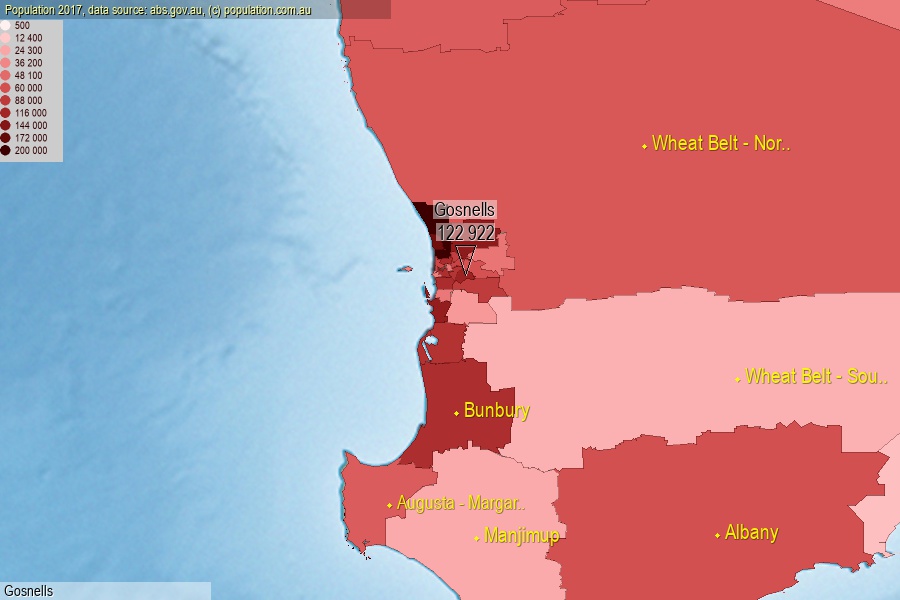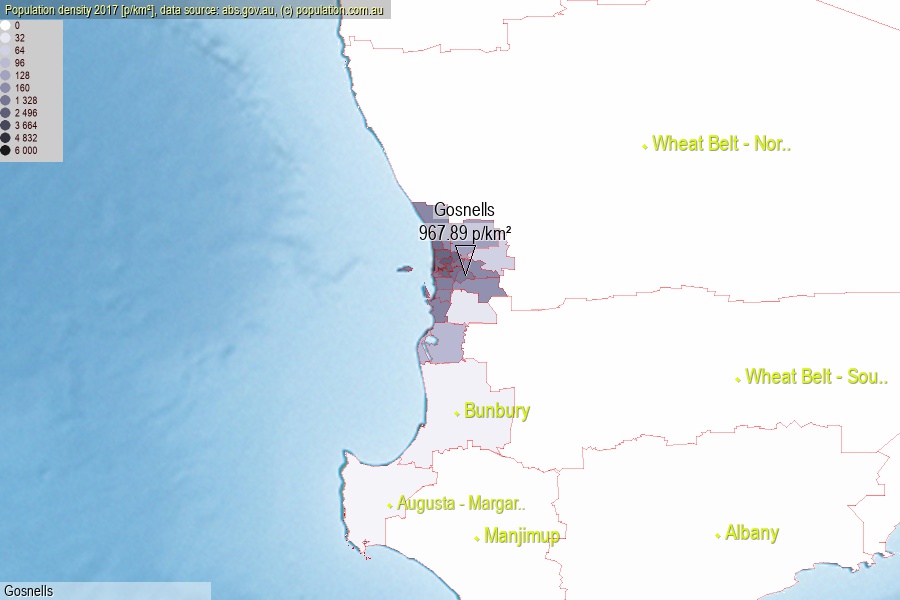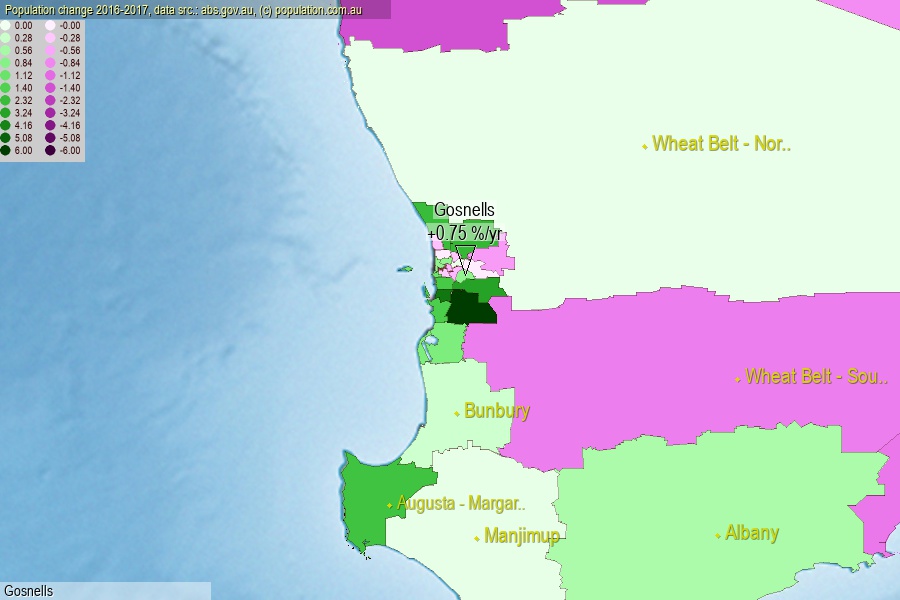 population.com.au
population.com.auLast official estimated population of Gosnells (as Statistical Area Level 3) was 122 922 people (on 2017-06-30)[2]. This was 0.50% of total Australian population and 4.743% of WA population. Area of Gosnells is 127.00 km², in this year population density was 967.89 p/km² . If population growth rate would be same as in period 2016-2017 (+0.75%/yr), Gosnells population in 2025 would be 130 459. [0]



Click to enlarge. Gosnells is located in the center of the images.
Population [people], population density [p./km²] and population change [%/year] [2]
View borders » (new window) [4]
[1991-1992] +1.42 %/Y
[1992-1993] +0.82 %/Y
[1993-1994] +0.10 %/Y
[1994-1995] +1.46 %/Y
[1995-1996] +2.25 %/Y
[1996-1997] +1.84 %/Y
[1997-1998] +0.90 %/Y
[1998-1999] +2.53 %/Y
[1999-2000] +2.04 %/Y
[2000-2001] +1.74 %/Y
[2001-2002] +2.00 %/Y
[2002-2003] +2.63 %/Y
[2003-2004] +2.89 %/Y
[2004-2005] +2.75 %/Y
[2005-2006] +2.55 %/Y
[2006-2007] +3.24 %/Y
[2007-2008] +3.95 %/Y
[2008-2009] +3.80 %/Y
[2009-2010] +3.28 %/Y
[2010-2011] +2.92 %/Y
[2011-2012] +3.36 %/Y
[2012-2013] +2.73 %/Y
[2013-2014] +1.15 %/Y
[2014-2015] +0.80 %/Y
[2015-2016] +0.24 %/Y
[2016-2017] +0.75 %/Y
[0] Calculated with linear interpolation from officially estimated population
[1] Read more about SA3 and Australian Statistical Geography Standard (ASGS) on abs.gov.au
[2] Population data from Australian Bureau of Statistics (Population and density: 2017; change: 2016-2017)
[3] Digital Boundaries: Australian Statistical Geography Standard (ASGS) 2016.
[4] Border coordinates are simplifyed using Ramer-Douglas-Peucker algorithm.